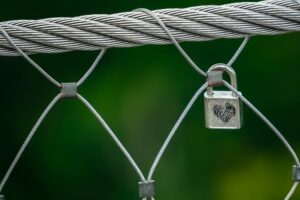Doomscrolling was recognized by Merriam-Webster as an official word in September 2023.
Doomscrolling refers to the excessive consumption of negative news or distressing content on digital platforms, especially via smartphones. It’s a relatively new term, yet its psychological imprint is well documented. In the age of 24/7 information, doomscrolling has emerged as a modern digital dilemma. This behavior surged during the COVID-19 pandemic, when uncertainty and the desire for control drove many people to obsessively seek updates—most of them grim (Sharma et al., 2022).
The allure of doomscrolling lies in the combination of instant information access, algorithm-driven content, and our natural tendency to seek out threats or alarming updates—a behavior hardwired through evolution.
But doomscrolling is more than just a bad habit. It’s a psychological feedback loop, often exacerbated by platform algorithms and our own emotional vulnerabilities. The consequences are far-reaching, touching everything from emotional well-being to personality traits and patterns of social media use.
The Psychology Behind Doomscrolling
Doomscrolling is often reinforced by Bandura’s social-cognitive theory, which highlights how behavior is shaped by observation and perceived reward (Kant, 2020). Social media often provides immediate, albeit superficial, gratification—likes, shares, or updates—that keep users engaged. But over time, this behavior can morph into addiction, diminishing self-control and increasing emotional distress (Bashir & Bhat, 2016).
Additionally, when individuals constantly expose themselves to fear-inducing or traumatic events, their perception of the world narrows, reinforcing a skewed sense of danger, hopelessness, or pessimism. This leads to a vicious cycle: the more negative content we consume, the more anxious we become, and the more compelled we feel to seek out updates to quell that anxiety.
Doomscrolling arises at the intersection of anxiety, curiosity, and digital dependency. The human brain is hardwired to attend to threats. When faced with ambiguity—like a global health crisis—many seek information to regain a sense of control (Carleton, 2016). However, in the age of algorithm-driven feeds, what we often encounter is a torrent of negativity, which leads to emotional overload and compulsive information seeking (Nguyen, 2020).
Platforms like X (formerly Twitter) are especially potent in this dynamic. Their real-time updates, emotionally charged content, and endless scroll features make it easier to fall into a trap of emotional reactivity and perpetual news consumption (Sharma et al., 2022).
Why do We Doomscroll?
Negativity Bias
People love negative stuff. It has been long established that people pay more attention to negative information than they do to positive (Rella E, 2020).
This is called negativity bias, which means that when it comes to our mental health we are highly affected by negative information (Baumeister et al., 2001). Our brains are built to focus on danger because it once helped keep our ancestors safe.
It’s not necessarily the case that we look for bad news. It’s just that social media amplifies it for us when we click on it, leading to doomscrolling [26].
Fear of Missing Out
Another reason people doomscroll is the fear of missing out (FOMO). FOMO refers to the irrationial fear of being left out, which leads to people doing things they otherwise wouldn’t, such as doomscorlling (Przybylski et al., 2013). Bethany Teachman, a psychology professor at the University of Virginia, says that FOMO likely plays a role in doomscrolling because people don’t want to miss important negative news (Delgado, 2022).
Control Seeking
It feels nice to be in control. During uncertain times—like the COVID-19 pandemic—people often scroll through bad news as fast as they can so that they can “figure stuff out” and be more prepared (Satici et al., 2023). They believe that staying informed will help protect them, which is true, however, but doomscrolling actually increases their anxiety than the other way around.
Brain Anatomy
We have to survive in the world, and that requires being constantly aware of threats and dangers. Our brains are wired for this. That is why we constantly check for bad news. The more we scroll, the worse we may feel, since the news can make our personal fears seem even bigger (Blades, 2021).
One part of the brain, the inferior frontal gyrus (IFG), helps process new information and update what we believe (Blades, 2021; Sharto et al., 2012). Normally, it filters out some bad news. But during doomscrolling, the brain might feel like it’s under threat and stop filtering it out (Blades, 2021).
In a study where researchers used a technique called transcranial magnetic stimulation (TMS) to affect the left IFG, people were more likely to believe negative news afterward (Sharto et al., 2012). This shows that the left IFG helps protect us from getting overwhelmed by bad news. Usually, the brain tries to reduce stress by giving more weight to good news (this is called optimistic bias) (Sharto et al., 2012). But if someone doomscrolls too much, their brain might struggle to filter out the bad, leading to anxiety, sadness, and loneliness.
Doomscrolling and Personality: Who’s More Vulnerable?
Using the Big Five personality framework, researchers found that neuroticism was significantly linked to increased doomscrolling. People high in neuroticism—those more prone to anxiety, sadness, and emotional instability—are naturally more sensitive to negative stimuli (Costa & McCrae, 1992; Canli et al., 2002).
Conversely, those with higher levels of conscientiousness, extraversion, and agreeableness were less likely to engage in doomscrolling. These traits often relate to greater emotional regulation, social connectedness, and purpose-driven behavior, which help buffer against the lure of negative digital content (McCrae & Costa, 2003).
The Illusion of Connection
Social media often creates a false sense of connection. While users may have hundreds—or even thousands—of friends or followers, the quality of these interactions is typically superficial. The credibility and authenticity of online personas are often questionable, and many users, especially teenagers, fall into the trap of comparing themselves to curated, filtered versions of reality (Raut & Patil, 2016).
This can lead to feelings of inadequacy, social comparison, and loneliness, despite being digitally “surrounded” by others.
In extreme cases, this behavior can become deadly. Multiple tragic incidents have been reported where teens, in pursuit of viral fame or engagement, accidentally lost their lives while taking risky selfies or recording dramatic social media content (BBC News, 2016; India Today, 2021).
Social Media Addiction, FOMO, and Digital Overload
The studies also found strong associations between doomscrolling and:
- Social media addiction
- Fear of missing out (FOMO)
- Increased daily time spent on social media
These findings align with prior research suggesting that social media overuse is closely tied to symptoms of depression and anxiety (Vannucci et al., 2017; Wathelet et al., 2020). Individuals caught in the doomscrolling cycle often use digital devices in a maladaptive attempt to soothe stress, but the effect is typically the opposite.
Doomscrolling’s Impact on Mental Health and Well-Being
Perhaps most critically, doomscrolling is not a harmless distraction. It directly contributes to psychological distress, including increased symptoms of depression, anxiety, and stress. In one study, researchers found that doomscrolling had a significant negative impact on life satisfaction, mental well-being, and harmony in life—and these effects were mediated by psychological distress (Sharma et al., 2022).
This suggests that doomscrolling leads to psychological distress, which in turn reduces well-being. Even moderate exposure to negative news on social media has been shown to dampen mood and reduce optimism (Buchanan et al., 2021).
Younger generations are especially vulnerable to the psychological effects of doomscrolling. Adolescents, driven by the need for acceptance, popularity, and belonging, often engage in compulsive online behaviors. Research shows that cyberbullying, anxiety, and depression are prevalent among youth who overuse social platforms (Bashir & Bhat, 2016; Jindal, Prasad & Sharma, 2021).
Doomscrolling and Phantom Vibration Syndrome
Beyond mental distress, doomscrolling often contributes to physical symptoms of overuse, such as sleep disruption, eye strain, and posture problems. But perhaps the most telling symptom is the so-called Phantom Vibration Syndrome (PVS)—a condition where users imagine their phone vibrating when it hasn’t. This is indicative of how deeply integrated digital dependency has become (Drouin, Kaiser & Miller, 2012).
Doomscrolling and Its Impact on Relationships
While social media was designed to bring people closer, its misuse—especially through obsessive behaviors like doomscrolling—can contribute to relational breakdowns. As users withdraw from real-life interactions in favor of digital immersion, emotional intimacy suffers, and in some cases, it leads to marital discord or even divorce (News18, 2015).
A case reported in China illustrates how excessive online interaction and digital affairs can erode trust and communication within marriages. Psychotherapist Yu Kun noted that nearly half of his clients’ extramarital affairs began online, demonstrating the destructive power of unchecked digital habits.
Impact on Education and Cognitive Health
Students are increasingly turning to social media for academic help, but this convenience comes at a cost. Rather than cultivating critical thinking or research skills, social platforms foster shortcut learning and reduced attention spans. The overuse of platforms like YouTube or TikTok during study sessions hampers focus and reduces the efficacy of learning (Raut & Patil, 2016).
Moreover, face-to-face communication skills are declining. As digital interaction replaces in-person conversation, essential soft skills like empathy, non-verbal cue reading, and emotional intelligence are at risk.
Can You Break the Cycle?
While doomscrolling may feel involuntary, it is possible to reclaim control. Here are some research-backed suggestions:
- Limit Social Media Use: Try to cap screen time or designate device-free hours.
- Curate Your Feed: Unfollow negative sources; follow uplifting, informative, or creative content.
- Develop Awareness: Recognize the urge to doomscroll and replace it with healthier behaviors like journaling, meditation, or calling a friend.
- Digital Detox: Take intentional breaks from digital devices—especially before bed.
- In-Person Connection: Prioritize face-to-face interactions, even if they’re brief.
- Mindfulness Practices: Techniques like meditation or journaling can increase self-awareness and reduce impulsive scrolling.
Final Thoughts
Doomscrolling is not just an individual issue—it’s a societal health challenge. Understanding who is most vulnerable and how digital environments exacerbate emotional distress allows mental health professionals, educators, and even tech companies to design better interventions.
With growing awareness, we can begin to address doomscrolling not just as a buzzword, but as a meaningful mental health priority in the digital age.
The good news is, you can fix it!
References
- Anand, N., Sharma, M. K., Thakur, P. C., Mondal, I., Sahu, M., Singh, P., & Singh, R. (2022). Doomsurfing and doomscrolling mediate psychological distress in COVID-19 lockdown: Implications for awareness of cognitive biases. Perspectives in Psychiatric Care, 58(1), 170–172. https://doi.org/10.1111/ppc.12803
- Bashir, H., & Bhat, S. (2016). Effects of social media on mental health: A review. International Journal of Indian Psychology, 4(1), 125–131.
- Baumeister, R. F., Bratslavsky, E., Finkenauer, C., & Vohs, K. D. (2001). Bad is stronger than good. Review of General Psychology, 5(4), 323–370. https://doi.org/10.1037/1089-2680.5.4.323
- BBC News. (2016). Girl, aged 12, dies after taking extreme selfie. https://www.bbc.com/news/newsbeat-37689716
- Blades, R. (2021). Protecting the brain against bad news. CMAJ, 193(12), E428–E429. https://doi.org/10.1503/cmaj.1095928
- Buchanan, R., et al. (2021). Impact of COVID-19 news consumption on mood and well-being. Journal of Media Psychology. [Details missing—consider adding volume, issue, page numbers, and DOI]
- Canli, T., et al. (2002). Neuroticism and emotion processing. Neuropsychologia, 40(9), 2067–2074.
- Carleton, R. N. (2016). Fear of the unknown: One fear to rule them all? Journal of Anxiety Disorders, 41, 5–21. https://doi.org/10.1016/j.janxdis.2016.03.011
- Costa, P. T., & McCrae, R. R. (1992). NEO PI-R professional manual. Psychological Assessment Resources.
- Delgado, C. (2022). Why you can’t stop doomscrolling and 5 tips to halt the vicious cycle. Business Insider. Retrieved March 28, 2024, from https://www.businessinsider.com
- Drouin, M., Kaiser, D. H., & Miller, D. A. (2012). Phantom vibrations among undergraduates: Prevalence and associated psychological characteristics. Computers in Human Behavior, 28(4), 1490–1496.
- India Today. (2021). Indore: 16-year-old dies while making fake hanging sequence for Instagram reel. https://www.indiatoday.in/cities/indore/story/indore-16-year-old-dies-while-making-fake-hanging-sequence-for-instagramreel-1887995-2021-12-15
- Jindal, S., Prasad, S. V. A. V., & Sharma, K. (2021). Impact of swear and negative texts on social media users. Indian Journal of Data Mining, 1(1), 14–19.
- Kant, R. (2020). Social media: Attraction or addiction? Asia Pacific Journal of Education, Arts and Sciences, 7(1), 1–8.
- McCrae, R. R., & Costa, P. T. (2003). Personality in adulthood: A five-factor theory perspective. Guilford Press.
- News18. (2015). Social media responsible for failed marriages, say experts. https://www.news18.com/news/lifestyle/social-media-responsible-for-failedmarriages-say-experts-1026069.html
- Nguyen, C. T. (2020). Echo chambers and epistemic bubbles. Episteme, 17(2), 141–161.
- Przybylski, A. K., Murayama, K., DeHaan, C. R., & Gladwell, V. (2013). Motivational, emotional, and behavioral correlates of fear of missing out. Computers in Human Behavior, 29(4), 1841–1848. https://doi.org/10.1016/j.chb.2013.02.014
- Raut, M. V., & Patil, M. P. (2016). Use of social media in education: Positive and negative impact on the students. International Journal of Recent Innovations in Computer and Communication, 4(4), 281–285.
- Rella, E. (2020). Why we’re obsessed with reading bad news — and how to break the “doomscrolling” habit. Yahoo. Retrieved January 7, 2021, from https://www.yahoo.com
- Satici, S. A., Gocet Tekin, E., Deniz, M. E., & Satici, B. (2023). Doomscrolling Scale: Its association with personality traits, psychological distress, social media use, and wellbeing. Applied Research in Quality of Life, 18(2), 833–847. https://doi.org/10.1007/s11482-022-10110-7
- Sharma, M. K., Anand, N., Thakur, P. C., & Mondal, I. (2022). Doomscrolling: Understanding compulsive negative information consumption. Current Psychology. https://doi.org/10.1007/s12144-022-03054-7
- Sharot, T., Kanai, R., Marston, D., Korn, C. W., Rees, G., & Dolan, R. J. (2012). Selectively altering belief formation in the human brain. Proceedings of the National Academy of Sciences, 109(42), 17058–17062. https://doi.org/10.1073/pnas.1205828109
- Vannucci, A., et al. (2017). Social media use and adolescent well-being. Journal of Adolescence, 61, 110–119.
- Wathelet, M., et al. (2020). Factors associated with mental health disorders among university students in France during the COVID-19 confinement. JAMA Network Open, 3(10), e2025591. https://doi.org/10.1001/jamanetworkopen.2020.25591





